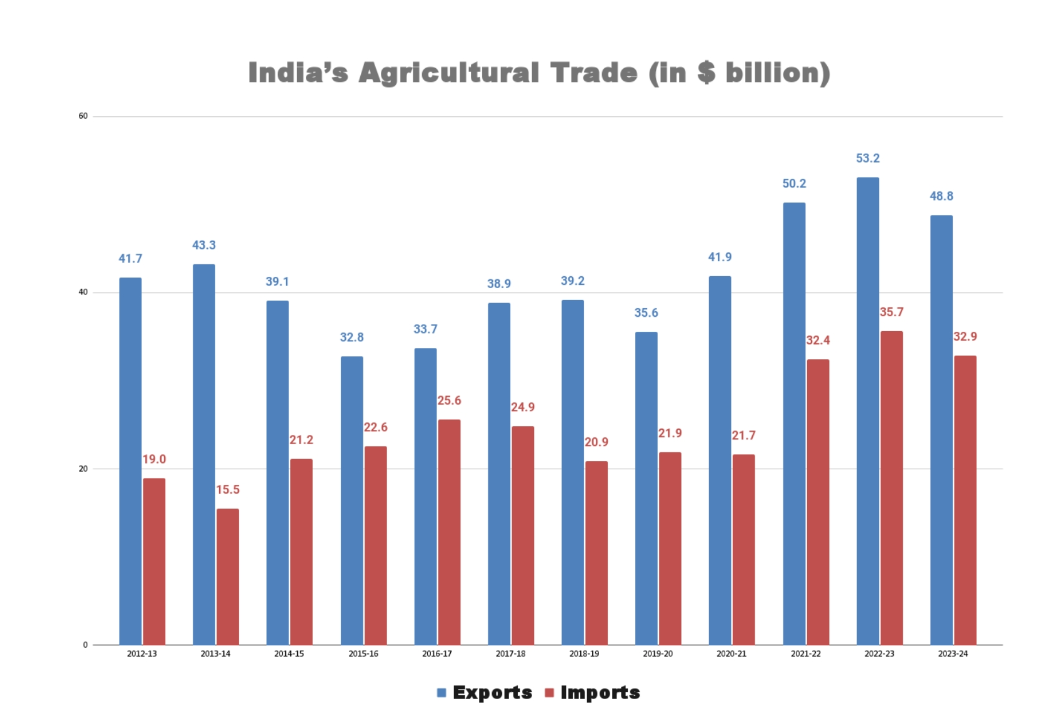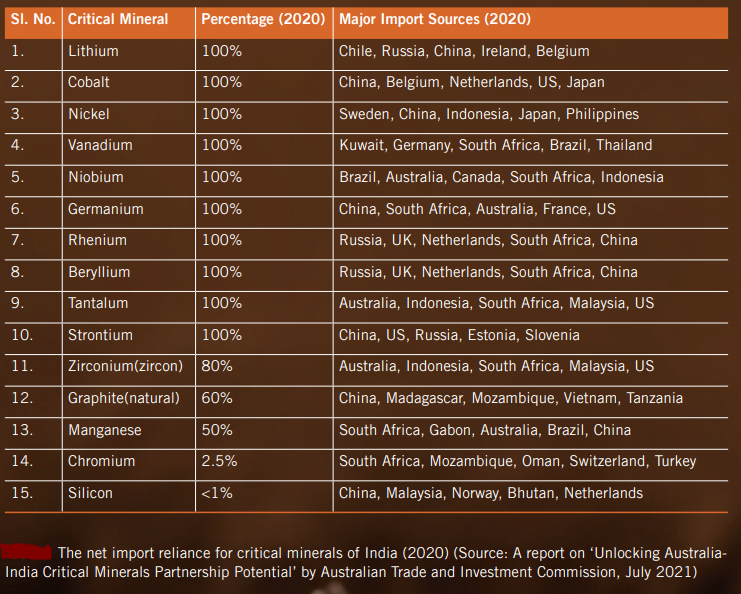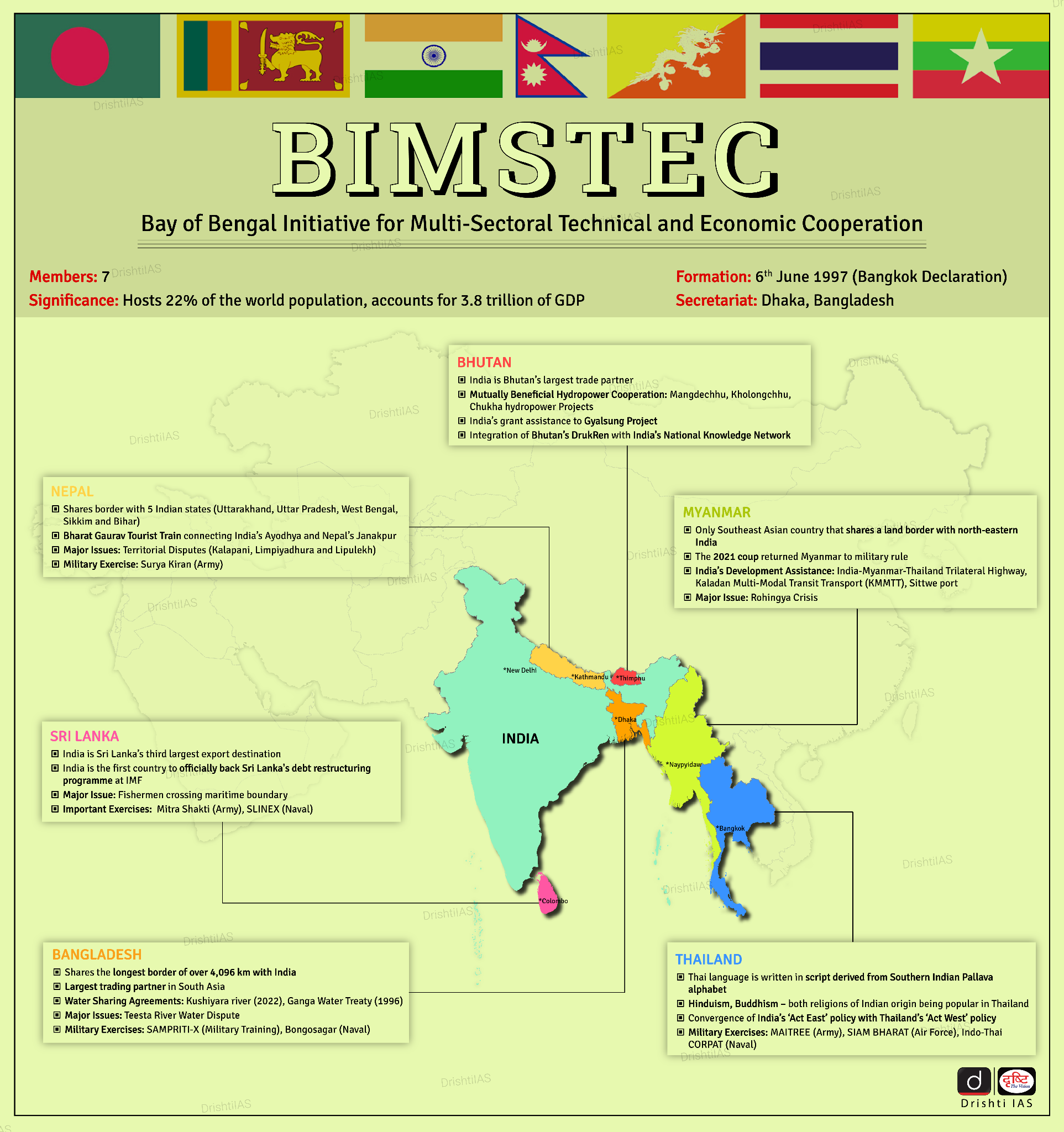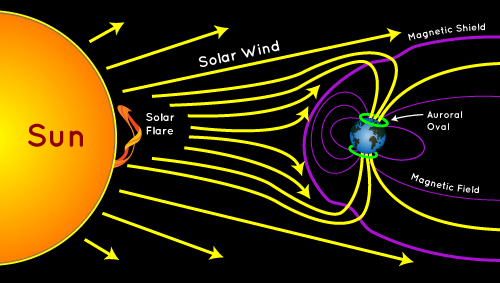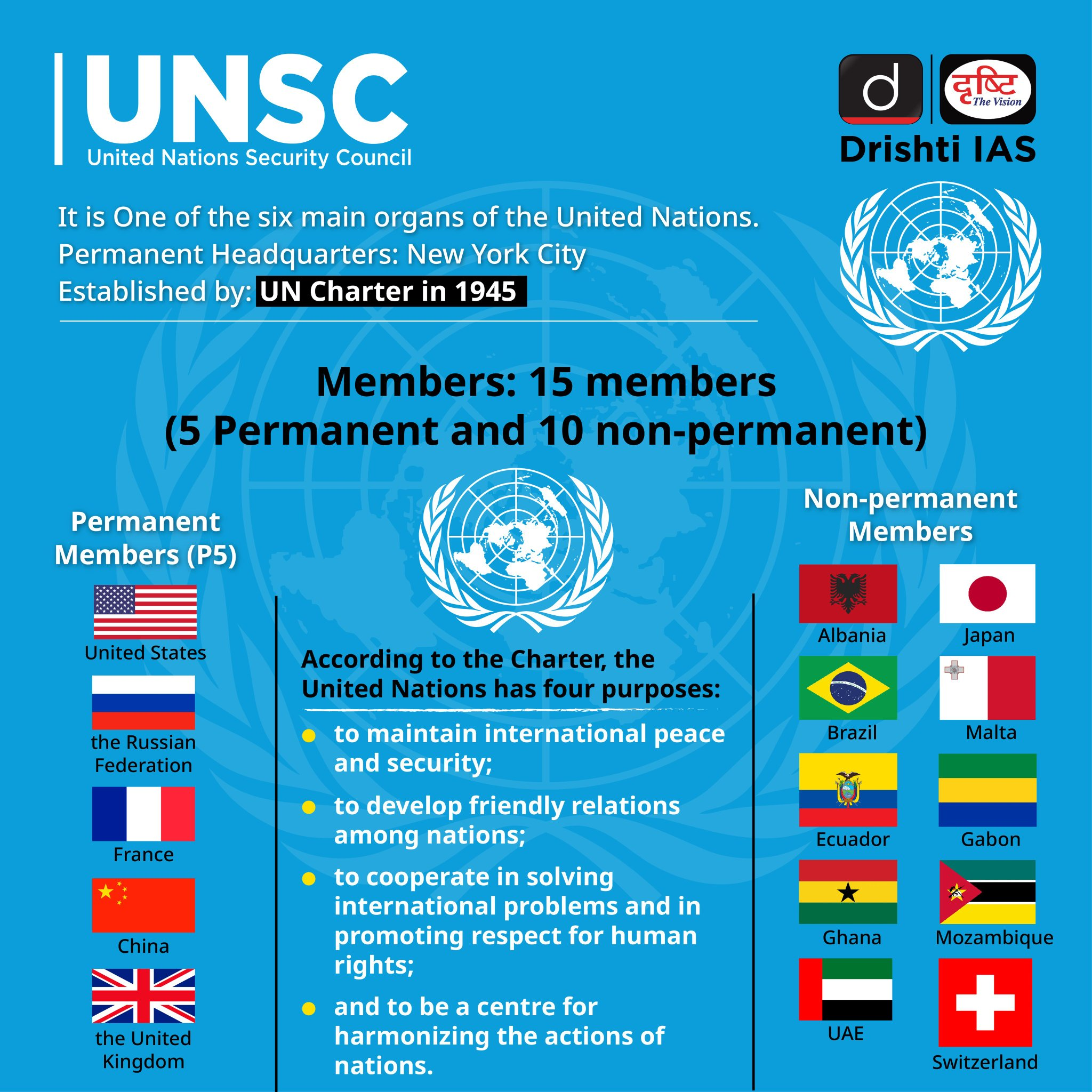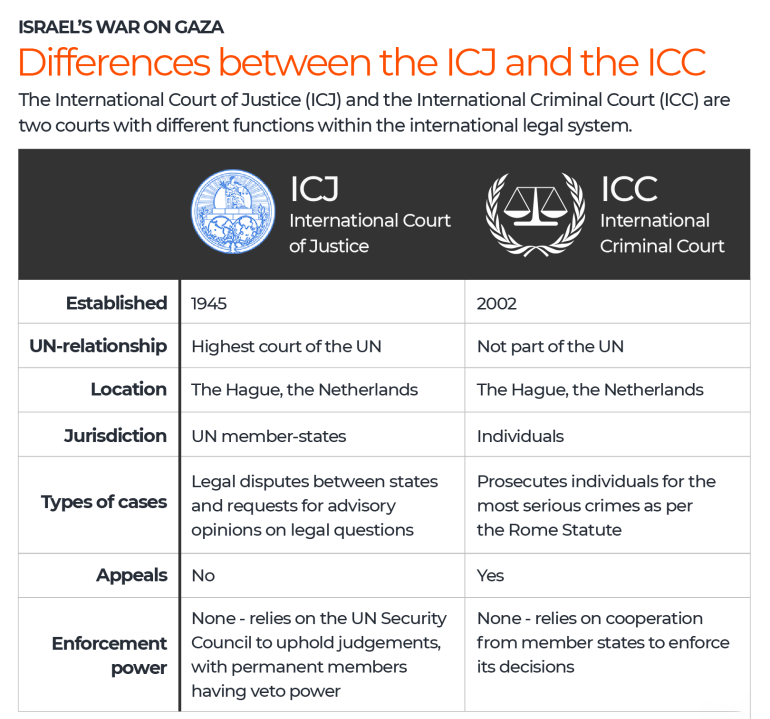Microplastics
For Prelims: Microplastics, Polyethylene, Solar UV radiation, Global Plastic Overshoot Day (POD), Ashtamudi Lake, Ramsar wetland, United Nations Environment Assembly (UNEA), Intergovernmental Negotiating Committee (INC), United Nations Environment Programme (UNEP) Plastics Treaty, Commonwealth Clean Oceans Alliance, New Zealand's Waste Minimization (Microbeads) Regulations, Plastic Waste Management Rules, 2016, Plastic Waste Management (Amendment) Rules, 2024.
For Mains: Ban on Single-Use Plastics, Microplastics and Environmental challenges, Health challenges, Regulatory and policy challenges, Detection and analysis challenges, Public awareness and education.
Why in News?
Recently, a study revealed the widespread occurrence of microplastics in the testicles of both humans and canines, potentially associated with decreased sperm count, with polyethene emerging as the predominant microplastic followed by PVC.
What are Microplastics?
- About:
- They are defined as plastics less than five millimetres in diameter. It can be harmful to our ocean and aquatic life.
- Under the influence of solar UV radiation, wind, currents, and other natural factors, plastic fragments into small particles, termed microplastics (particles smaller than 5 mm) or nanoplastics (particles smaller than 100 nm).
- Classification:
- Primary Microplastics: They are tiny particles designed for commercial use and microfibers shed from clothing and other textiles.
- E.g., microbeads found in personal care products, plastic pellets, and plastic fibres.
- Secondary Microplastics: They are formed from the breakdown of larger plastics, such as water bottles.
- Exposure to environmental factors, primarily solar radiation and ocean waves, is the cause of this breakdown.
- Primary Microplastics: They are tiny particles designed for commercial use and microfibers shed from clothing and other textiles.
- Applications of Microplastics:
- Medical and Pharmaceutical Uses: Used in targeted drug delivery due to the capacity to absorb and release chemicals effectively.
- Industrial Applications: Used in air-blasting technology for cleaning machinery and in the production of synthetic textiles.
- Cosmetics and Personal Care Products: Used as exfoliating agents in facial scrubs, toothpaste, and other personal care products.
What are the Current Developments Regarding Microplastics?
- Microplastics in Testicular Tissues: The study reported mean total microplastic levels of 122.63 µg/g in dogs and 328.44 µg/g in humans, with polyethene (PE) being the dominant polymer. This discovery raises concerns about the potential impact on human reproductive health, including declining sperm counts.
- Global Plastic Overshoot Day (POD): In 2024, POD is projected to occur on 5th September, marking the point when plastic waste generation exceeds the world's capacity to manage it.
- By the end of 2024, 217 countries are expected to release over 3 million tonnes of microplastics into waterways, with China and India being the top contributors.
- Microplastics in Drinking Water: A critical review assessed the quality of 50 studies on microplastics in drinking water and freshwater sources.
- It highlighted the need for standardised sampling and analysis methods, as only four studies met all the quality criteria.
- Microplastic contamination in Ashtamudi Lake: A study highlights significant microplastic pollution in Ashtamudi Lake, a Ramsar wetland, revealing microplastics in fish, shellfish, sediment, and water.
- Hazardous heavy metals like molybdenum, iron, and barium were found in microplastics, posing risks to aquatic organisms and humans who consume contaminated fish and shellfish.
Regulations Related to Microplastics
- Global:
- United Nations Environment Assembly (UNEA) Resolutions:
- The UNEA resolution mandated the development of an international legally binding instrument on plastic pollution, including in the marine environment.
- The resolution led to the establishment of the Intergovernmental Negotiating Committee (INC) to draft the treaty, to complete negotiations by the end of 2024
- United Nations Environment Programme (UNEP) Plastics Treaty:
- The UNEP is working on an international legally binding instrument to address plastic pollution, including microplastics.
- New Zealand's Waste Minimisation (Microbeads) Regulations: New Zealand has banned the sale and manufacture of wash-off products containing plastic microbeads since 2017.
- United Nations Environment Assembly (UNEA) Resolutions:
- India:
What are the Challenges Related to Microplastics?
- Environmental Challenges:
- Microplastics are highly persistent in the environment, and their small size allows them to be transported over long distances, making them ubiquitous pollutants.
- Microplastics pose a threat to wildlife, especially marine organisms, as their ingestion can result in the bioaccumulation of toxic chemicals.
- Health Challenges:
- Humans are exposed to microplastics through eating, breathing, and skin contact, which are found in tissues like the placenta and can cause health issues like oxidative stress, DNA damage, organ dysfunction, metabolic disorders, etc.
- Regulatory and Policy Challenges
- Despite some countries banning microbeads, there's no worldwide regulation for all microplastic sources and inconsistent monitoring hampers pollution mitigation efforts.
- Limited resources, inadequate infrastructure, and lack of public awareness impede the effective enforcement of existing regulations.
- Detection and Analysis Challenges: Detecting and quantifying microplastics in environmental samples is challenging due to their diverse properties.
Way Forward
- Scientific Research and Monitoring:
- Developing and promoting the use of biodegradable plastics can help reduce the persistence of microplastics in the environment.
- Filtration systems in wastewater treatment plants and devices to capture microplastics from stormwater runoff can help reduce microplastics entering aquatic environments.
- Techniques such as Fourier-transform infrared spectroscopy (FTIR), Raman spectroscopy, and mass spectrometry are commonly used but need further refinement to improve accuracy and reliability.
- Regulatory Measures:
- Implementing bans on single-use plastics and microbeads in personal care products can significantly reduce the release of primary microplastics into the environment.
- The European Union's REACH regulation is an example of such a measure.
- EPR schemes make producers responsible for the entire lifecycle of their products. This can incentivise manufacturers to design more sustainable products and reduce plastic waste.
- Implementing bans on single-use plastics and microbeads in personal care products can significantly reduce the release of primary microplastics into the environment.
- Innovative Ways to Deal with Microplastics:
- Biodegradable Silk: Researchers at MIT have developed a silk-based system that can replace microplastics in various applications, including agricultural products, paints, and cosmetics.
- Plant-Based Filters: The filter made of tannins and wood dust that can trap up to 99.9% of microplastics in water.
- Natural Fiber Textiles: Natural fiber textiles do not release microplastics during washing and are biodegradable under the right conditions. These materials offer a sustainable alternative to synthetic fibers like polyester and nylon.
- Public Awareness and Education:
- Incorporating information about microplastics and their impacts into school curricula can educate the next generation about the importance of reducing plastic pollution and adopting sustainable practices.
|
Drishti Mains Question: Q. Discuss the challenges posed by microplastics to human health. Suggest measures to mitigate these risks. |
UPSC Civil Services Examination, Previous Year Question (PYQ)
Mains
Q. How can the mountain ecosystem be restored from the negative impact of development initiatives and tourism? (2019)
Q. What are the impediments in disposing the huge quantities of discarded solid waste which are continuously being generated? How do we remove safely the toxic wastes that have been accumulating in our habitable environment? (2018)
Need for New Agriculture Export-Import Policy
For Prelims: Agricultural Exports Trends, Cereals, Sugar, Onions, Agricultural Export Policy (AEP), Market Access Agreements, Agricultural Export Policy 2018, Edible Oils, and Pulses
For Mains: Reasons for Agricultural Exports Decline, Agricultural Export Policy (AEP), Export Subsidies, Tariff Reductions, Quality Standards, Market Access Agreements, Agricultural Export Policy 2018, Monitoring Framework, Consumer Food security and infrastructure development.
Why in News?
Recently, Department of Commerce data revealed that India's agricultural exports declined by 8.2% in 2023-24, primarily due to government curbs on various commodities. Meanwhile, agricultural imports dropped by 7.9% due to lower edible oil prices.
- These trends underscore the need for a balanced agriculture export-import policy to stabilise the agricultural sector and ensure both domestic availability and market growth.
What is the Current State of Indian Agricultural Exports and Imports?
- Agricultural Exports:
- India's agricultural exports witnessed a substantial decline of 8.2% in the fiscal year 2023-24, totalling USD 48.82 billion.
- This drop comes after a record-breaking performance of USD 53.15 billion in the previous fiscal year 2022-23.
- Declined Commodities:
- Sugar Exports: No sugar exports were allowed from October 2023, reducing exports to USD 2.82 billion in 2023-24 from USD 5.77 billion in the previous year.
- Non-Basmati Rice Exports: Concerns over domestic availability and food inflation triggered a ban on all white non-basmati rice exports from July 2023.
- Currently, only parboiled grain shipments are permitted within the non-basmati segment, attracting a 20% duty.
- These restrictions have pulled down overall non-basmati exports from a record USD 6.36 billion in 2022-23 to USD 4.57 billion in 2023-24.
- Wheat Exports: Exports stopped in May 2022, plummeting to USD 56.74 million in 2023-24 from USD 2.12 billion in 2021-22.
- Onion Exports: In May 2024, the Centre lifted a ban on onion exports. Simultaneously, a floor price of USD 550 per tonne (below which no exports can take place) and a 40% duty were imposed.
- Official data reveals onion exports at only 17.08 lakh tonnes (lt), worth USD 467.83 million, during April-February 2023-24, as against 25.25 lt (USD 561.38 million) for the whole of 2022-23.
- Growth in Other Commodities:
- Basmati rice and spices exports saw growth, with basmati rice reaching USD 5.84 billion and spices crossing the USD 4 billion mark for the first time.
- Exports of marine products, castor oil, and other cereals (mainly maize) also posted growth, contributing to the overall export basket.
- India's agricultural exports witnessed a substantial decline of 8.2% in the fiscal year 2023-24, totalling USD 48.82 billion.
- Agricultural Imports:
- India's agricultural imports witnessed a 7.9% dip during the fiscal year 2023-24, reflecting the impact of global market conditions and domestic demand.
- Reduced Edible Oil Imports:
- The significant decline in overall agricultural imports was largely due to a single commodity: edible oils.
- India's imports of vegetable fats topped USD 20 billion in 2022-23, a year immediately after the Russia-Ukraine war when global prices for vegetable oils were at their peak.
- However, in 2023-24, the average FAO vegetable oil sub-index eased to 123.4 points, indicating lower global prices.
- As a result, the vegetable oil import bill fell below USD 15 billion during the last fiscal year.
- Surge in Pulse Imports:
- Imports of pulses almost doubled to USD 3.75 billion in 2023-24, the highest since the USD 3.90 billion and USD 4.24 billion levels of 2015-16 and 2016-17, respectively.
- The surge in pulse imports highlights the continued dependence on
foreign sources to meet domestic demand for this essential commodity.
What are the Key Factors Influencing India's Agricultural Exports and Imports?
- Export Restrictions: The government has imposed curbs on the export of commodities like rice, wheat, sugar, and onions due to concerns over domestic availability and food inflation.
- These restrictions have led to a significant decline in the exports of these commodities.
- Global Price Movements: The UN Food and Agriculture Organization's (FAO) food price index (base: 2014-16=100) is used as a reference to track global agri-commodity prices.
- The FAO food price index dipped from an average of 119.1 points in 2013-14 to 96.5 points between 2013-14 and 2019-20, reflecting a crash in global agri-commodity prices.
- This crash in global prices reduced the cost competitiveness of India's agricultural exports.
- However, the global price recovery following the Covid-19 pandemic and the Russia-Ukraine war led to the FAO index soaring to 140.8 points in 2022-23.
- This spike in global prices resulted in India's farm exports and imports zooming to all-time highs in 2022-23, before dropping in the fiscal year 2023-24.
- In 2023-24, the average FAO index eased to 121.6 points, while the vegetable oil sub-index fell to 123.4 points, leading to a decline in India's edible oil import bill.
- Government Policies: The government's decision to maintain low or zero import duties on pulses and edible oils contradicts its goal of boosting domestic production.
- This policy favours imports over domestic cultivation, potentially discouraging farmers from diversifying crops. Ultimately, it undermines long-term agricultural development and self-sufficiency.
What is Agricultural Export Policy?
- About: An agricultural export policy consists of a collection of government rules, actions, and encouragements aimed at regulating and boosting the export of agricultural goods from a specific nation.
- The policy encompasses export subsidies, tariff reductions, quality standards, market access agreements, financial incentives, and trade promotion initiatives to boost agricultural producers' and exporters' access to international markets and enhance their competitiveness.
- India’s Agriculture Export Policy, 2018: In December 2018, the government implemented a comprehensive agriculture export policy aimed at leveraging India's agricultural export potential using appropriate policy measures to establish India as a leading force in global agriculture and increase the income of farmers.
- Objective: It aimed at doubling agricultural exports from USD 30+ billion to over USD 60 billion by 2022.
- It was expected that farmers would get the benefit of export opportunities in the overseas market.
- It would promote ethnic, organic, traditional, and non-traditional Agri products exports.
- To establish a monitoring framework to oversee the implementation of the Agricultural Exports Policy.
- Elements:
- Strategic: Policy measures, infrastructure, and logistics; supporting a holistic approach to boost exports; greater involvement of state governments in agricultural exports.
- Operational: Focus on clusters, promoting value-added exports, marketing and promotion of "Brand India," attracting private investments into production and processing, establishing a strong quality regime, and research & development.
- Objective: It aimed at doubling agricultural exports from USD 30+ billion to over USD 60 billion by 2022.
What are the Challenges to the Agri-Export Policy of India?
- Policy Instability and Double Standards: Frequent changes in export policies, often aimed at protecting domestic consumers from price hikes, can adversely affect farmers and traders. Sudden bans and restrictions, such as those on wheat and onions, disrupt market stability and long-term trade relationships.
- Conflicting Goals: The government's reduced import duties on pulses and low tariffs on edible oils aim to ensure consumer affordability but conflict with promoting domestic crop diversification to less water-intensive and import-substituting crops.
- Subsidy Centric Schemes: Populist measures during election seasons, like increased consumer food and farmer fertilizer subsidies, loan waivers, and free power, though politically popular, undermine fiscal discipline and the agricultural sector's financial health.
- Inadequate R&D Investment: India's investment in agricultural R&D is around 0.5% of agricultural GDP, insufficient for substantial growth, and needs to be doubled or tripled to enhance production and exports.
- Quality and Standards: Ensuring consistent quality and compliance with international sanitary and phytosanitary (SPS) standards is a significant challenge for Indian agricultural exports due to pests and diseases.
- Competitiveness: India faces competition in pricing and quality in its agricultural exports, whereas exchange rate fluctuations also influence competitiveness.
Government Schemes to Promote Agri-Export in India
What are the Steps Ahead for a Stable Agri-Export Policy in India?
- Balancing Interests and Long-Term Goals: Economists suggest more predictable and rules-based policies, like temporary tariffs, to manage exports without sudden shocks.
- Strategic Buffer Stocks and Market Intervention: The government should maintain buffer stocks of essential commodities to mitigate price volatility and ensure market stability. This approach allows for more controlled and less disruptive market interventions, preventing sudden policy shifts that can destabilise the agricultural sector.
- Farmer’s Welfare: Prioritise the welfare of farmers and ensure that they receive fair prices for their produce. The success of agricultural exports should directly benefit the farming community.
- Support for Domestic Consumers: To ensure food security, policy support is needed for domestic consumers, and it should be through a domestic income policy targeted specifically at vulnerable sections of society.
- Productivity Enhancement: Increasing agricultural productivity while ensuring quality is essential for competitiveness. It will require investments in R&D, seeds, irrigation, fertilisers, and better farming practices.
- Diversify Export Basket: Diversify the basket of agricultural exports, emphasise value-added products, lessen reliance on a select few commodities, and target a wide array of international markets.
- Infrastructure Development: Invest in modern infrastructure, including cold storage, processing facilities, transportation, and logistics, to reduce post-harvest losses and enhance export competitiveness.
- International Best Practices: Strengthen diplomatic efforts to negotiate favourable trade agreements and reduce trade barriers to gain better access to international markets. Learn from successful agricultural export policies and best practices in other countries such as:
- The Netherlands: A global leader in horticulture exports, the Netherlands emphasises innovation, efficient logistics, and strong producer organisations.
- The United States: The U.S. Department of Agriculture offers a range of programs to support agricultural exports, including market development initiatives and technical assistance.
|
Drishti Mains Question: Q. Discuss the steps needed to improve India's export-import policy to enhance international trade competitiveness. |
UPSC Civil Services Examination, Previous Year Question (PYQ)
Prelims:
Q. With reference to the circumstances in Indian agriculture, the concept of “Conservation Agriculture” assumes significance. Which of the following fall under the Conservation Agriculture? (2018)
1. Avoiding the monoculture practices
2. Adopting minimum tillage.
3. Avoiding the cultivation of plantation crops
4. Using crop residues to cover soil surface
5. Adopting spatial and temporal crop sequencing/crop rotations
Select the correct answer using the code given below:
(a) 1, 3 and 4
(b) 2, 3, 4 and 5
(c) 2, 4 and 5
(d) 1, 2, 3 and 5
Ans: (c)
Mains
Q. What are the present challenges before crop diversification? How do emerging technologies provide an opportunity for crop diversification?(2021)
Q. What are the main constraints in transport and marketing of agricultural produce in India? (2020)
India's Critical Mineral Acquisition Plans in Africa
For Prelims: Critical mineral, Electric vehicle, Rare earth elements, Khanij Bidesh India Ltd, Supply Chain Resilience initiative, Mineral Security Partnership (MSP), Net Zero emissions, Geological Survey of India
For Mains: Significance of Critical Minerals for India, India's strategy for securing critical minerals, Government Initiatives, India's domestic energy goals
Why in News?
India is stepping up its critical mineral acquisition plans in Africa, challenging China's dominant position in the region.
- The race for critical minerals is a key focus, with India securing mining collaborations and access agreements with several African nations.
Why is India Stepping Up its Critical Mineral Acquisition Plans in Africa?
- Resource Securitisation: Ensure a stable and reliable supply of critical minerals for India's domestic industries, particularly the growing electric vehicle (EV) and renewable energy sectors.
- Reduce dependence on imports and mitigate potential supply chain disruptions.
- Support the country's push towards self-reliance and strategic autonomy in critical sectors.
- Countering China's Dominance: China is estimated to control over 5% of cobalt processing facilities in the Democratic Republic of Congo (DRC).
- Chinese companies are estimated to own 80% of the Tenke Fungurume mines, which produce nearly 12% of the world's cobalt resource.
- China has also made substantial investments in securing lithium resources in Zimbabwe.
- India aims to establish a stronger presence in the African mining sector to counterbalance China's influence.
- Chinese companies are estimated to own 80% of the Tenke Fungurume mines, which produce nearly 12% of the world's cobalt resource.
- Access to High-Quality Reserves:
- Africa holds significant reserves of critical minerals like cobalt, copper, lithium, and rare earth elements.
- Over 30% of the world's critical mineral deposits are found in Africa, presenting an opportunity for African countries to become major global suppliers and trade among themselves.
- Acquire access to high-quality and economically viable mineral deposits to meet India's growing demand.
- Leverage Africa's mineral wealth to support India's industrial and technological aspirations.
- Africa holds significant reserves of critical minerals like cobalt, copper, lithium, and rare earth elements.
- Strengthening Bilateral Ties: India is leveraging government-to-government (G2G) negotiations to secure mining collaborations and access agreements with African nations.
- India has signed MoUs with South Africa, Mozambique, Congo, Tanzania, Zambia, Malawi, the Republic of Cote d’Ivoire, and Zimbabwe.
- This helps India build stronger diplomatic and economic ties with countries in the region.
- A Confederation of Indian Industry (CII) report stated that Indian investments in Africa could reach USD 150 billion by 2030. It noted that since April 1996, India has invested USD 74 billion in Africa.
What are India's Other Overseas Critical Mineral Acquisition Plans?
- Khanij Bidesh India Ltd (KABIL): It is a joint venture of National Aluminium Company Ltd (NALCO), Hindustan Copper Ltd (HCL), and Mineral Exploration and Consultancy Ltd (MECL) the Central Public Sector Enterprises (CPSEs) under the Ministry of Mines.
- It aims to source and process strategic minerals from foreign sources, particularly focusing on battery minerals for supply in India.
- Coal India Limited (CIL): It is targeting the acquisition of lithium, cobalt, and nickel assets abroad, as it aims to diversify its operations beyond its core coal business.
- CIL has amended its Memorandum of Association to include non-ferrous and critical minerals.
- Minerals Security Partnership (MSP): India joined the Mineral Security Partnership (MSP) in June 2023, making it the 14th member alongside countries like the United States, Australia, Canada, and others.
- India seeks to leverage this framework to aid Indian public sector undertakings (PSUs) in acquiring critical mineral assets abroad.
- Established in 2022, MSP aims to build reliable supply chains through collaboration between governments and industry, providing diplomatic and financial aid for strategic projects along the value chain.
- Supply Chain Resilience initiative (SCRI): Collaboration with Australia and Japan aimed at ensuring supply chain resilience for critical minerals.
- Australian Partnership: India signed the Critical Minerals Investment Partnership with Australia to invest in critical minerals projects.
- Global Collaborations: India is collaborating with countries like Chile, Argentina, and Bolivia, known for their significant lithium resources.
- India is in talks with Sri Lanka to acquire a graphite mine block, as part of its plan to secure critical mineral supplies globally.
- Graphite is crucial for India as it is used in battery manufacturing. The Sri Lankan graphite is considered among the purest in the world, with over 98% carbon content.
- India is in talks with Sri Lanka to acquire a graphite mine block, as part of its plan to secure critical mineral supplies globally.
What Initiatives have Prompted India to Secure Critical Minerals?
- Panchamrit Vision: India's commitment to climate change mitigation includes growing non-fossil fuel energy capacity to 500 GW by 2030 and achieving Net Zero emissions by 2070.
- Strategic Initiatives:
- Planning Commission (2011): Highlighted the need for strategic mineral resources.
- Expert Committee (2019): Focused on cobalt and lithium sourcing from Australia, Argentina, and Bolivia.
- Geological Survey of India (GSI): Focused on finding new resources through advanced exploration techniques.
- MMDR Amendment Act, 2023: The Mines and Minerals (Development and Regulation) Amendment Act, 2023, amend the Mines and Minerals (Development and Regulation) Act, 1957, to strengthen the exploration and extraction of critical minerals essential for India's economic development and national security.
- Offshore Area Minerals (Development And Regulations) Amendment Act, 2023: It regulates the mining of minerals in the maritime zones of India, categorising activities into reconnaissance, exploration, and production.
Critical Minerals
- About: Critical minerals are those minerals that are essential for economic development and national security, the lack of availability of these minerals or even the concentration of existence, extraction or processing of these minerals in a few geographical locations may lead to supply chain vulnerability and disruption.
- In June 2023, India published its first detailed report on critical minerals, identifying 30 essential minerals.
- These minerals are Antimony, Beryllium, Bismuth, Cobalt, Copper, Gallium, Germanium, Graphite, Hafnium, Indium, Lithium, Molybdenum, Niobium, Nickel, PGE, Phosphorous, Potash, REE, Rhenium, Silicon, Strontium, Tantalum, Tellurium, Tin, Titanium, Tungsten, Vanadium, Zirconium, Selenium and Cadmium.
- In June 2023, India published its first detailed report on critical minerals, identifying 30 essential minerals.
- Significance: These minerals are crucial for manufacturing mobile phones, computers, batteries, EVs, solar panels, and wind turbines.
- The Indian Economic Survey 2022-23 highlighted the significance of rare earth elements and critical minerals as potential future geopolitical battlegrounds, akin to crude oil over the past 50 years.
- The shift to clean energy technologies is rapidly increasing the demand for critical minerals.
- India's domestic EV market is projected to grow at a compounded annual Growth Rate (CAGR) of 49% from 2022 to 2030, with an anticipated annual sales volume of 1 crore by 2030, driving demand for advanced chemistry cell (ACC) batteries.
|
Drishti Mains Question: Q. Evaluate India's initiatives and partnerships for securing critical minerals globally and their implications for India's energy security and economic growth. |
UPSC Civil Services Examination Previous Year Question (PYQ)
Prelims:
Q. Recently, there has been a concern over the short supply of a group of elements called ‘rare earth metals’. Why? (2012)
- China, which is the largest producer of these elements, has imposed some restrictions on their export.
- Other than China, Australia, Canada and Chile, these elements are not found in any country.
- Rare earth metals are essential for the manufacture of various kinds of electronic items and there is a growing demand for these elements.
Which of the statements given above is/are correct?
(a) 1 only
(b) 2 and 3 only
(c) 1 and 3 only
(d) 1, 2 and 3
Ans: (c)
Mains:
Q. Despite India being one of the countries of Gondwanaland, its mining industry contributes much less to its Gross Domestic Product (GDP) in percentage. Discuss. (2021)
Q. “In spite of adverse environmental impact, coal mining is still inevitable for development”. Discuss. (2017)
BIMSTEC Charter
For Prelims: Bay of Bengal Initiative for Multi-Sectoral Technical and Economic Cooperation, Indo-Pacific Region, Indian Ocean, South Asian Association for Regional Cooperation.
For Mains: Significance of BIMSTEC for Regional Cooperation.
Why in News?
Recently, Bay of Bengal Initiative for Multi-Sectoral Technical and Economic Cooperation (BIMSTEC) has recently achieved an important milestone with the charter of the grouping coming into force on 20th May 2024.
What is the BIMSTEC Grouping?
- About:
- BIMSTEC is a regional organisation comprising 7 member states - Bangladesh, Bhutan, India, Myanmar, Nepal, Sri Lanka, and Thailand.
- It was formed in 1997 with the aim of promoting multifaceted technical and economic cooperation among the countries of the Bay of Bengal region.
- The region covered by BIMSTEC is home to around 1.5 billion people, with a combined GDP of over USD 3.8 trillion.
- Origin:
- The sub-regional organisation was established in 1997 with the adoption of the Bangkok Declaration.
- Initially consisting of 4 Member States, it was known as 'BIST-EC' (Bangladesh, India, Sri-Lanka and Thailand Economic Cooperation).
- In 1997, it was renamed 'BIMST-EC' after Myanmar joined.
- The admission of Nepal and Bhutan in 2004 led to another name change to the 'Bay of Bengal Initiative for Multi-Sectoral Technical and Economic Cooperation' (BIMSTEC).
What are the Key Features of the BIMSTEC Charter?
- International Recognition: BIMSTEC gains official standing as a legal entity, allowing it to interact directly with other international organisations on matters of diplomacy and cooperation.
- Shared Goals: The Charter outlines BIMSTEC's objectives, which focus on building trust and friendly relations among member states, and accelerating economic development and social progress in the Bay of Bengal region.
- Structured Organisation: A clear framework is established for BIMSTEC's operation, outlining regular meetings at the Summit, Ministerial, and Senior Officials' levels.
- Expanding Membership: The Charter paves the way for future growth by allowing new countries to join BIMSTEC and for other nations to participate as observers.
- Re-constitution and reduction in the number of sectors of cooperation to 7 and each member-state will serve as a lead for a sector.
- Bangladesh in Trade, investment and development; Bhutan in environment and climate change; India in security, including energy; Myanmar in agriculture and food security; Neopal in people-to-people contacts; Sri Lanka in science, technology and innovation and Thailand in connectivity.
What is the Significance of BIMSTEC?
- Aligned with Act East Policy: BIMSTEC is more aligned with India's Act East Policy. It helps India gain trade and security prominence in the Indian Ocean region and the Indo-Pacific.
- Alternative to SAARC: Following India's efforts to isolate Pakistan at the 2016 South Asian Association for Regional Cooperation (SAARC) summit in response to the Uri attacks, BIMSTEC has emerged as a preferable regional cooperation platform, offering an alternative to SAARC in South Asia.
- As a counter to China: As China expands its Belt and Road Initiative (BRI) across South and Southeast Asia, India views this growing presence as a challenge to its regional dominance.
- To counter this, India is taking a leading role in BIMSTEC, promoting it as an alternative platform for regional cooperation.
- Promotion of Intangible Culture: Initiatives like India’s Centre for Bay of Bengal Studies (CBS) at Nalanda University, Bihar for research on art, culture and other subjects related to the Bay of Bengal can bring new insight and research in intangible heritage of the region.
- Platform for Regional Cooperation: It brings together countries from South Asia and Southeast Asia, providing a platform for enhanced regional cooperation.
- It has promoted deepening cooperation in security matters and management of Humanitarian Assistance and Disaster Relief (HADR).
How is BIMSTEC Different from SAARC?
| Criteria | BIMSTEC | SAARC |
| Established | Originated by Bangkok Declaration in 1997 | Originated by Adoption of Charter by Members in 1985 in Dhaka |
| Member Countries | Bangladesh, Bhutan, India, Myanmar, Nepal, Sri Lanka, Thailand | Afghanistan, Bangladesh, Bhutan, India, Maldives, Nepal, Pakistan, Sri Lanka |
| Geographical Focus | Interregional (South Asia and South East Asia) | Regional (South Asia) |
| Intra-Regional Trade | Increased around 6% in a decade | Around 5% since inception |
| Key Strengths | Connects SAARC countries with ASEAN, reasonably friendly relations among members, practical cooperation in 14 sectors | Long-standing regional forum, numerous agreements signed |
| Secretariat Location | Dhaka, Bangladesh | Kathmandu, Nepal |
| Leadership | Balancing of power with the presence of Thailand and India on the bloc | India perceived as 'Big Brother' by smaller members |
What are the Challenges to BIMSTEC?
- Lack of Efficiency and Slow Progress: BIMSTEC faces challenges due to inconsistent policy-making, infrequent operational meetings, and a lack of adequate financial and human resources for its Secretariat.
- Limited Intra-Regional Trade and Connectivity: The BBIN connectivity project of Bangladesh, Bhutan, India and Nepal is yet to be finalised.
- Despite signing Free Trade Agreement (FTA) in 2004, BIMSTEC stands far away from this goal. Of the seven constituent agreements needed for the FTA, only two are in place as of now.
- Despite BIMSTEC's goal of economic cooperation, regional trade remains low. In 2020, India's trade with BIMSTEC countries only accounted for 4% of its total foreign trade. India-Myanmar border called as "Asia's least open."
- BIMSTEC members trade more with non-members than with each other.
- Challenges in Maritime Trade and Fisheries: The Bay of Bengal is a rich fishing ground, boasting an annual fish catch of 6 million tonnes (7% of the world's total) and extensive coral reefs.
- According to the FAO, the Bay of Bengal is one of Illegal, Unreported and Unregulated (IUU) fishing hotspots in the Asia-Pacific.
- Other Issues Among Member States:
- Rohingya refugee crisis between Bangladesh and Myanmar.
- India-Nepal border issues.
- Myanmar's domestic political instability after the military coup.
Way Forward
- Finalising the BIMSTEC Charter: This provides a much-needed legal framework, defining BIMSTEC's purpose, structure, and functioning. It fosters stability and predictability in cooperation efforts.
- BIMSTEC Master Plan for Transport Connectivity: its finalisation will outlines a 10-year strategy to improve regional infrastructure (roads, railways, ports, etc.).
- Enhanced connectivity will boost trade, create jobs, and facilitate the movement of people and goods.
- BIMSTEC Convention on Mutual Legal Assistance in Criminal Matters: This agreement fosters cooperation in tackling transnational crime, a major threat to regional security. By facilitating information sharing and evidence gathering, it strengthens law enforcement capabilities.
- Need to implement projects like Bay of Bengal Large Marine Ecosystem (BOBLME) project of FAO and GEF to curtail IUU fishing.
- BIMSTEC Technology Transfer Facility (TTF): To bridge the technological gap among member states. The TTF, based in Sri Lanka, will facilitate the sharing of knowledge and expertise in key areas, promoting regional development.
- Cooperation between Diplomatic Academies/Training Institutions: This collaboration will enhance diplomatic ties and foster a shared understanding of regional challenges and opportunities among future leaders.
- It promotes regional cohesion and a sense of community.
- Develop Institutional Framework: India should consider creating organizational setups to promote peace and prosperity in the region. It is also necessary to establish successful institutions for BIMSTEC, similar to the South Asian University (SAU) under SAARC.
- Promote Citizen Engagement: Initiatives like a BIMSTEC Parliamentarians Forum, student exchange programs, and a business visa scheme can foster closer ties and a sense of regional community.
Conclusion
The entry into force of the BIMSTEC Charter marks a significant milestone for the grouping, providing it with a legal personality and the ability to engage in structured diplomatic dialogue. This development is crucial for the economic and geopolitical integration of the Bay of Bengal region, and aligns with India's efforts to strengthen its neighborhood and Act East policy.
|
Drishti Mains Question: Q.1 Critically analyse potential of BIMSTEC in replacing SAARC as the primary platform for regional cooperation in South Asia? Q.2 How effective is BIMSTEC in achieving its objectives of economic and technical cooperation among member countries? |
UPSC Civil Services Examination Previous Year Question (PYQ)
Q. Do you think that BIMSTEC is a parallel organisation like the SAARC? What are the similarities and dissimilarities between the two? How are Indian foreign policy objectives realized by forming this new organisation? (2022)
Solar Storms
Recent studies have found that the Sun's magnetic field originates approximately 32,000 kilometres beneath the sun's surface, which is shallower than previous estimates of over 209,000 kilometres.
- This discovery could help in predicting solar cycles and forecasting occurrences of severe solar storms more accurately.
What are Solar Cycle, Sunspots and Solar Flares?
- Solar Cycle:
- The solar cycle is the cycle that the Sun’s magnetic field goes through approximately every 11 years, during which the it's magnetic activity increases and decreases.
- The Sun, a massive ball of hot, electrically-charged gas, generates a powerful magnetic field that undergoes a cycle known as the solar cycle.
- Every 11 years or so, the Sun's magnetic field completely flips. This means that the Sun's north and south poles switch places.
- The solar cycle affects activity on the surface of the Sun, such as sunspots which are caused by the Sun's magnetic fields.
- The solar cycle is tracked by counting sunspots. It starts with a solar minimum, marked by few sunspots, and progresses to a solar maximum, when sunspot numbers peak.
- The solar cycle is the cycle that the Sun’s magnetic field goes through approximately every 11 years, during which the it's magnetic activity increases and decreases.
- Sunspots:
- Sunspots appear dark on the Sun's surface because they are cooler areas with exceptionally strong magnetic fields, which prevent some heat from reaching the surface.
- Solar Flares:
- The magnetic field lines near sunspots often tangle, cross, and reorganise. This can cause an explosion of energy called a solar flare.
- Solar flares emit significant radiation into space. Intense solar flares can disrupt radio communications on Earth.
- Solar flares are sometimes accompanied by a coronal mass ejection (CME). CMEs are huge bubbles of radiation and particles from the Sun. They explode into space at very high speed when the Sun’s magnetic field lines suddenly reorganise.
What are Solar Storms?
- About:
- Solar storms (geomagnetic storms) occur when a large-scale magnetic eruption, often causing a coronal mass ejection (CME) and associated solar flare, accelerates charged particles in the solar atmosphere to very high velocities.
- Movement Towards Earth:
- These move toward the Earth at a speed of about three million miles per hour.
- When a CME (high-speed solar stream) reaches Earth, it interacts with the magnetosphere which causes the magnetosphere to become compressed and agitated, allowing energetic solar wind particles to reach our atmosphere over the poles.
- The Earth’s magnetosphere is created by its magnetic fields and it usually protects us from the particles emitted by the Sun.
- Impacts of Solar Radiation Storms near Earth:
- When energetic protons collide with satellites or humans in space, they can penetrate deep into the object that they collide with and cause damage to electronic circuits or biological DNA.
- During the more extreme Solar Radiation Storms, passengers and crew in high flying aircraft at high latitudes may be exposed to radiation risk.
- Geomagnetic storms can also cause auroras (northern and southern lights).
Read more: Sunspots, Solar Flare
UPSC Civil Services Examination, Previous Year Question (PYQ)
Q. If a major solar storm (solar flare) reaches the Earth, which of the following are the possible effects on the Earth?(2022)
- GPS and navigation systems could fail.
- Tsunamis could occur at equatorial regions.
- Power grids could be damaged.
- Intense auroras could occur over much of the Earth.
- Forest fires could take place over much of the planet.
- Orbits of the satellites could be disturbed.
- Shortwave radio communication of the aircraft flying over polar regions could be interrupted.
Select the correct answer using the code given below:
(a) 1, 2, 4 and 5 only
(b) 2, 3, 5, 6 and 7 only
(c) 1, 3, 4, 6 and 7 only
(d) 1, 2, 3, 4, 5, 6 and 7
Ans: (c)
Alternative Voting Methods
Why in News?
Recently, voters have been polling in the world's largest election, the general election to elect members of the 18th Lok Sabha in India, taking place over seven phases.
What are the Alternative Methods of Voting Available to Citizens?
- Voting Process under the RPA:
- The Representation of the People Act, 1951 (RPA) mandates in-person voting at assigned polling stations using Electronic Voting Machines (EVMs), with exceptions for certain voters to ensure universal suffrage.
- Postal Ballot: ‘Postal ballot’ allows voters who cannot be physically present in polling stations to vote remotely, as specified in Section 60 of the RPA.
- This method differs from normal voting in three ways:
- Polling takes place outside the polling station
- It takes place without EVMs
- Polling takes place before the designated poll date in the constituency.
- Eligibility: As per Rule 18 of The Conduct of Election Rules, 1961, the following classes of persons are entitled to vote by postal ballot:
- Special Voters: Individuals holding declared office under Section 20(4) of RPA, including the President, Vice President, Governors, Cabinet Ministers, other high-ranking dignitaries, etc. and their spouses.
- Service Voters: Members of the Indian armed forces, paramilitary forces, an armed state police member serving outside their state, or a government employee stationed abroad and their spouses residing with them.
- Voters on Election Duty: All individuals from Commission officials to private personnel involved in polling duties are included.
- Absentee Voters under Section 60(c) of RPA 1951: In 2019, the Election Commission established the 'Absentee Voters' category encompassing senior citizens aged 85+, persons with disabilities with at least 40% disability, Covid-19 suspect or affected individuals, and essential services workers such as railways, telecom, electricity, health, traffic, aviation, fire services, and authorised media personnel.
- Under Preventive Detention: Electors subjected to preventive detention.
- Application Process: Eligible individuals for postal voting must formally apply within a specified timeframe, while service voters and those under Preventive Detention receive postal ballots automatically and cannot vote in person once issued.
- Electronically Transmitted Postal Ballot System (ETPBS): In 2016, an amendment to Rule 23 introduced the Electronically Transmitted Postal Ballot System (ETPBS) for Service Voters, facilitating faster delivery of postal ballots through encrypted electronic transmission and free return via post.
- Process:
- Rule 18A, introduced in 2022, mandates voters on election duty to vote at designated Facilitation Centers using postal ballots.
- Similarly, an appropriate venue and room for the Postal Voting Centre (PVC) are identified to facilitate voting by absent voters in the Essential Services (AVES) category.
- This method differs from normal voting in three ways:
- Home Voting:
- Criterion: Over 81 lakh 85+ aged voters and 90 lakh PwD voters are registered in the electoral roll nationwide.
- Process: For absentee voters in the category of senior citizens (AVSC) and PWDs over 85, and Covid-19 Suspect/positive, Booth Level Officers (BLOs) deliver Form 12D and compulsorily obtain acknowledgments from them.
- Miscellaneous:
- Voting in a Different Polling Centre: When an election worker is assigned to their registered constituency, they receive an Election Duty Certificate allowing them to vote at their assigned polling station; otherwise, they're eligible for a postal ballot.
- Proxy voting: Armed and paramilitary service members can vote via proxy or postal ballot; those opting for proxy are termed 'Classified Service Voters'.
- Assisted Voting: In case of voter disability, the Presiding Officer may permit a companion over 18 to vote on their behalf, with indelible ink applied to the companion's right index finger.
Disqualification from the Voting Process
- Individuals who are convicted of offences committed under Section 171E (which deals with bribery) and Section 171F (which deals with personation or undue influence at an election) of the Indian Penal Code are disqualified from participating in elections.
- Those convicted of offences under Section 125 (which deals with various electoral offences), Section 135, and Section 136 of the Representation of the People Act, 1951 face disqualification from elections.
- If an individual votes in more than one constituency, his vote is disqualified.
UPSC Civil Services Examination, Previous Year Questions (PYQs)
Prelims
Q. Consider the following statements: (2017)
- The Election Commission of India is a five-member body.
- The Union Ministry of Home Affairs decides the election schedule for the conduct of both general elections and bye-elections.
- Election Commission resolves the disputes relating to splits/mergers of recognised political parties.
Which of the statements given above is/are correct?
(a) 1 and 2 only
(b) 2 only
(c) 2 and 3 only
(d) 3 only
Ans: (d)
Q2. Consider the following statements: (2020)
- According to the Constitution of India, a person who is eligible to vote can be made a minister in a State for six months even if he/she is not a member of the Legislature of that State.
- According to the Representation of People Act, 1951, a person convicted of a criminal offense and sentenced to imprisonment for five years is permanently disqualified from contesting an election even after his release from prison.
Which of the statements given above is/are correct?
(a) 1 only
(b) 2 only
(c) Both 1 and 2
(d) Neither 1 nor 2
Ans: (d)
United Nations Department of Safety and Security
Recently, a former Indian Army officer Colonel, working with the United Nations Department of Safety and Security (UNDSS), was killed in Gaza.
- The deaths of over 190 UN staff in Gaza have led the UN Secretary-General to call for an immediate humanitarian ceasefire.
United Nations Department of Safety and Security (UNDSS):
- It is the security arm of the UN. It provides security expertise to all UN entities so they can safely carry out their missions and programs.
- It identifies and analyses security threats, and then develops strategies to address those risks.
- It has a network of security advisors, analysts, officers and coordinators in over 131 countries to provide security support.
AI Krish and AI Bhoomi
Recently, Doordarshan Kisan (DD KISAN) has become the first government TV channel in the country to launch two AI anchors named AI Krish and AI Bhoomi.
- These will act as information hubs for farmers, delivering updates on subjects like
- Cutting-edge advancements in agricultural research.
- Price fluctuations and trends in agricultural markets (mandis).
- Weather forecasts that could impact crops.
- Details of government schemes supporting agriculture.
- They can speak in 50 languages and read news 24 hours and 365 days.
- The initiative aims to serve the agricultural and rural community, with a focus on educating and promoting holistic development.
- DD Kisan is an Indian state-owned agriculture television channel, founded by the Ministry of Information and Broadcasting.
- It is the flagship channel of Doordarshan, launched on 26th May 2015.
- It aims to cater to the farming and rural community, to strengthen the three-dimensional concept of agriculture, including balanced farming, animal husbandry, and plantation.
Read more: Doordarshan Logo, Broadcasting only through Prasar Bharati
ICJ Orders Israel to Cease Military Actions in Rafah
The International Court of Justice (ICJ) has mandated Israel to cease its military operations in Rafah immediately.
- The ICJ ruling demands Israel to stop all military actions in the Rafah area and ensure the Rafah crossing remains open for uninterrupted humanitarian aid.
- The ICJ also ordered Israel to ensure “unimpeded access” to UN-mandated investigators to look into allegations of genocide.
- The International Criminal Court’s prosecutor also sought arrest warrants for top Israeli and Hamas leaders, accusing them of war crimes and crimes against humanity.
- International Court of Justice (ICJ):
- The ICJ is the principal judicial organ of the United Nations (UN) and is tasked with resolving legal disputes between states and providing advisory opinions as per international law, but it lacks effective enforcement mechanisms for its legally binding rulings.
CSIR-CMERI's Innovative Electric Tiller
In a move to empower small and marginal farmers, the Council of Scientific and Industrial Research (CSIR) and the Department of Scientific and Industrial Research (DSIR) have unveiled the CSIR-Central Mechanical Engineering Research Institute’s Electric Tiller.
- The electric tiller is designed to cater to the needs of small to marginal farmers (land holdings of less than 2 hectares), who constitute over 80% of India's farming community.
- The tiller boasts enhanced torque and field efficiency, making it a highly capable and efficient agricultural tool.
- It prioritises user comfort and environmental sustainability, with features like reduced hand-arm vibration, quiet operation, and zero exhaust emissions.
- The electric tiller can potentially reduce operational costs by up to 85%, offering significant financial benefits to farmers.
- The tiller's user-friendly design supports battery pack swapping and multiple charging options, including alternating current (AC) and Solar direct current (DC) charging, ensuring versatility and convenience.
- CSIR was established in September 1942, headquartered in New Delhi and funded by the Ministry of Science and Technology.

